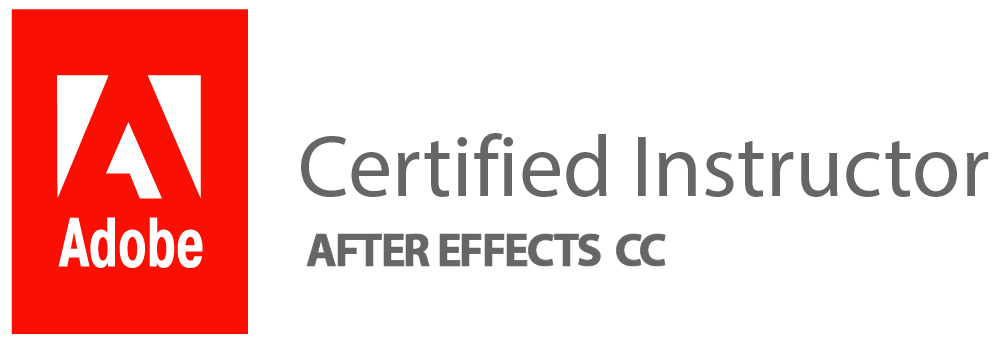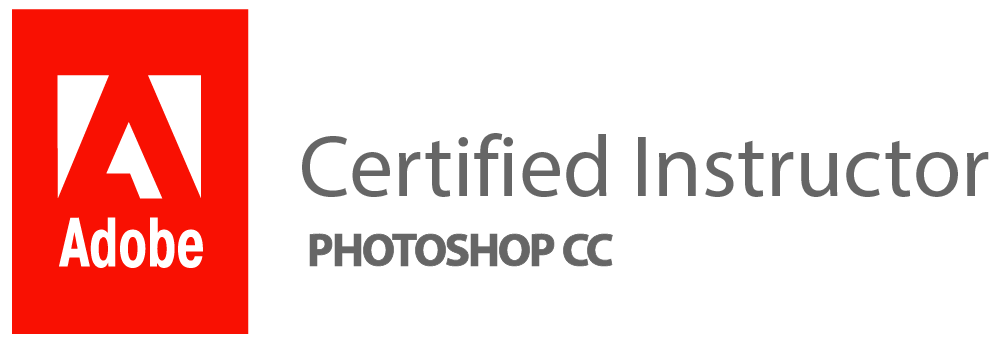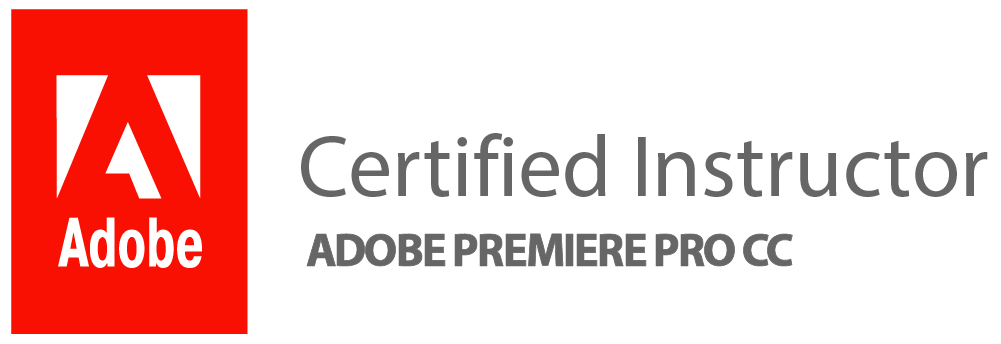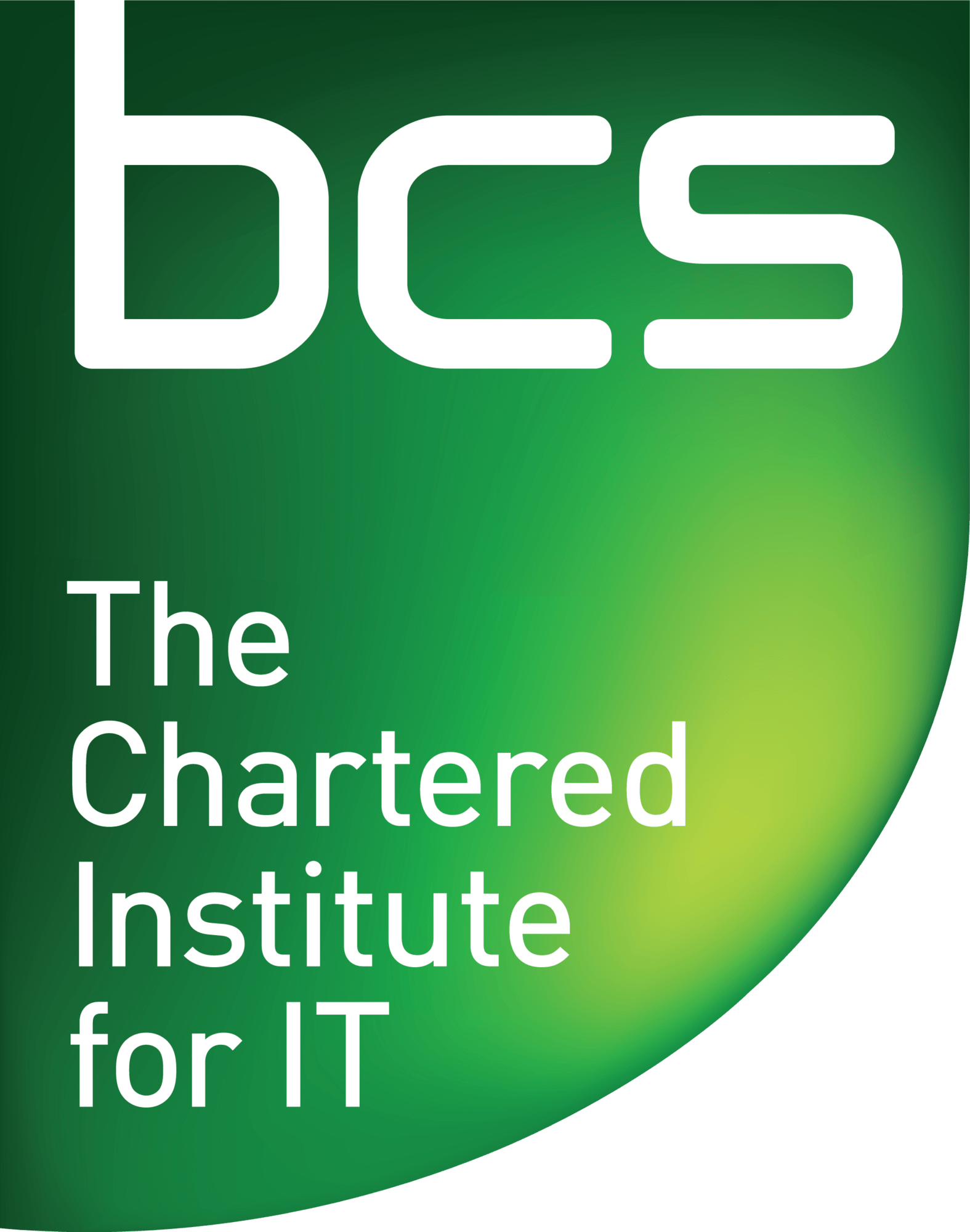Intro To Graphic Design Course – What you learn in graphic design and visual communication depends on your level of experience.
At the beginner level, you will learn the basics of graphic design and visual communication, including colour theory, typography, composition, and how to use design software like Adobe Illustrator and Photoshop. You’ll also learn about different file types for print and web graphics. As a beginner, you’ll gain an understanding of how all these elements work together to create effective designs.
For intermediate learners with some experience under their belt, they can expect to dive deeper into graphic design principles such as branding guidelines, art direction and layout techniques. They will also learn more about user experience (UX) design with an emphasis on information architecture (IA), wireframing and prototyping. This level is where one starts exploring advanced techniques that make designs not just appealing but functional too.
Finally, as an experienced designer looking to take their skills to the next level or stay up-to-date in a constantly evolving industry, you may want to consider taking courses in emerging technologies such as virtual reality (VR) or augmented reality (AR). Additionally, you may focus more on acquiring soft skills such as presentation skills for pitching ideas or project management skills for working effectively with clients. Ultimately what you learn depends on your goals as a designer, but continuous learning is key in this field.
Graphic design: A basic understanding of how to create graphics
In order to create effective graphics, it is important to have a basic understanding of graphic design principles. These include things like composition, colour theory, typography, and image resolution. Composition refers to the arrangement of visual elements within a design and can greatly impact how the viewer interprets the message being conveyed. The colour theory involves understanding how different colours work together and their psychological effects on viewers.
Typography is another important aspect of graphic design, as it involves choosing the right fonts and typefaces that complement the overall aesthetic of the design while still ensuring legibility. Image resolution refers to the quality of an image which can affect its clarity when printed or displayed digitally.
By having a foundational understanding of these principles, individuals can create visually appealing graphics that effectively communicate their intended message. Furthermore, continued education in graphic design allows for further exploration into advanced techniques, such as 3D modelling or motion graphics, which can take designs to new heights.
Graphic design principles: How to use colours, shapes, and typography to communicate a message
In graphic design and visual communication, understanding the principles of colour, shape, and typography is essential to effectively convey a message. The right combination of colours can evoke certain emotions or moods, such as calmness with blue or excitement with red. Shapes can also communicate meaning; for example, circles are often associated with unity and wholeness, while triangles may symbolize strength or direction.
Typography plays a crucial role in delivering the message as well. Different fonts have their own personalities and can convey anything from elegance to playfulness. Additionally, text hierarchy helps guide the reader’s eye through the piece and emphasizes important information.
While these principles may seem simple on their own, it takes careful planning and consideration to use them effectively. A successful design will utilize these elements in harmony to create a visually appealing and clear message that resonates with its intended audience.
Visual communication: The process of creating an effective message through graphics and art
In graphic design and visual communication, you will learn how to create an effective message through the use of graphics and art. This process involves understanding the principles of design, including colour theory, typography, and composition. In addition to these fundamental concepts, you will also need to master various software tools used for creating digital designs.
One important aspect of visual communication is the ability to convey complex ideas in a simple and understandable way. This requires careful planning and attention to detail when selecting images or designing graphics. It’s essential to understand your target audience so that you can tailor your message appropriately.
Through practice and feedback from instructors or peers, you’ll develop skills in creating compelling visuals that tell a story or evoke emotion. Whether working on advertising campaigns or designing logos for companies, visual communication plays a critical role in building brand identity and engaging audiences. Ultimately, mastering this field allows for endless possibilities in creating impactful designs that communicate effectively across different mediums.
How you learn graphic design will depend on the level of experience you have.
For beginners, learning graphic design requires an understanding of the basics, such as colour theory, typography, layout and composition. It’s important to start with a solid foundation in order to progress to more complex design concepts. Taking courses or workshops online can provide these basic skills and give you a better understanding of the industry.
For intermediate designers, expanding your knowledge in software programs such as Adobe Photoshop and Illustrator is key. Learning advanced techniques for editing images, creating vector graphics and manipulating layouts can take your designs to the next level. Building upon this skill set can lead to more specialized areas within graphic design.
Advanced designers often focus on honing their expertise in specific areas, such as branding or UX/UI design. They have mastered the basics and software tools, so they are able to work on more intricate projects that require attention to detail and creativity. Continuing education through conferences, networking events or mentorship programs can provide opportunities for growth within these specialized fields of graphic design.
What Are The Different Types Of Graphic Design Courses Available For Beginners?
One of the best ways to start a career in graphic design is to enrol in a course designed for beginners. There are several types of graphic design courses available for those who want to get started in this field. For instance, some schools offer certificate programs that can be completed in as little as six months. These programs are ideal for those who want to learn the basics of graphic design and gain practical skills that can be applied immediately.
Another type of graphic design course available for beginners is an associate’s certificate program. These programs typically take two years to complete and offer more comprehensive training on various aspects of graphic design, such as typography, colour theory, and layout. An associate’s certificate can provide students with a strong foundation in visual communication principles and prepare them for entry-level positions in the industry.
In summary, there are different types of graphic design courses available for beginners depending on their goals and preferences. Whether you opt for a quick certificate program or pursue an associate’s certificate, these courses will teach you essential skills such as how to use software tools like Adobe Photoshop and Illustrator, develop your artistic abilities, work with clients, build your portfolio and land your first job in this exciting field.
What Topics Are Typically Covered In A Beginner’s Graphic Design Course?
A beginner’s graphic design course covers a wide range of topics that are essential for anyone who wants to start a career in the field. The course typically begins with an introduction to basic design principles such as colour theory, typography, composition, and layout. Students will learn how to use various design software tools, such as Adobe Photoshop and Illustrator, to create their designs.
Furthermore, the course would cover topics on web design and user interfaces (UI), which are important skills in today’s digital age. This includes designing responsive websites and creating digital graphics specifically for social media platforms like Instagram or Facebook. Students will also learn about branding basics such as logos, business cards, letterheads, and other essential marketing materials.
Lastly, communication is key in visual communication; thus, students would also learn presentation techniques that enable them to communicate their ideas effectively. They will understand how to present their work professionally while explaining the rationale behind each decision made throughout the project process. Overall, this beginner’s graphic design course provides a solid foundation for students looking to pursue a career in graphic design or related fields like advertising or marketing communications.
What Software Do I Need To Learn Graphic Design As A Beginner?
One of the essential pieces of software for graphic design beginners is Adobe Photoshop. It’s a powerful program that allows you to create, edit and manipulate images, making it an indispensable tool for a graphic designer. Through Photoshop, you can learn how to adjust image brightness and contrast levels, add filters and special effects, retouch photographs, or even make colour corrections.
Another popular software used in graphic design in Adobe Illustrator. The program is perfect for creating logos or any other graphics that require clean designs because it uses vector graphics as opposed to raster images. This means the graphics can be scaled up or down without losing their quality.
Finally, InDesign is another recommended piece of software for budding designers who want to work more in publication design, such as magazines or brochures. With InDesign, you can import text and images from other programs, such as Photoshop or Illustrator, into layouts quickly and easily while also having access to features like precise typography control, which is important in print media.
How Long Does It Take To Become Proficient In Graphic Design?
In graphic design, you learn the foundational principles of visual communication such as colour theory, typography, composition, and design software. These principles form the basis of any graphic design work that you will produce. You also learn how to interpret a client’s brief and translate their ideas into a visual concept that communicates their message effectively.
Becoming proficient at graphic design takes time and practice. It is impossible to give an exact timeframe for how long it takes to become proficient since it varies from person to person depending on factors like natural talent and dedication to learning. However, most designers agree that it takes about 2-3 years of consistent practice and study to become proficient at graphic design.
To speed up the learning process, aspiring designers can take courses or workshops in specific areas of graphic design, such as branding or web design. They can also seek feedback from other designers who have more experience and experiment with different styles until they find their own unique voice within the industry. Ultimately, becoming proficient at graphic design requires patience, passion for learning and creativity.
What Skills Should Someone Possess To Begin Learning Graphic Design?
To begin learning graphic design, there are certain skills that one should possess. Firstly, a good understanding of design principles is essential. This includes concepts such as colour theory, typography and layout design. Strong attention to detail is also crucial in graphic design, as even the smallest mistake can affect the overall quality of the work.
Secondly, proficiency in relevant software programs is necessary for creating digital designs. Some of the most commonly used programs include Adobe Photoshop and Illustrator. Familiarity with other software such as InDesign and After Effects may also be beneficial depending on the specific area of graphic design being pursued.
Lastly, creativity and a strong visual sense are important traits for any aspiring graphic designer. The ability to come up with unique ideas and execute them effectively is what sets great designers apart from others in this field. Additionally, having an interest in art and staying up-to-date with current trends can help cultivate these skills further.
What Careers Can Be Pursued With A Background In Graphic Design?
Graphic design and visual communication programs provide students with a broad range of skills that can be applied to various careers beyond traditional graphic design jobs. The curriculum typically includes courses in typography, colour theory, photography, digital illustration, and web design. These skills prepare graduates for careers in advertising, marketing, media production, and more.
One career option is user experience (UX) design. UX designers create interfaces for websites or apps that are visually appealing while also being easy to navigate. This requires an understanding of how users interact with technology and the ability to create designs that meet their needs. Another potential career path is art direction in the film or television industry. Art directors use their knowledge of composition and visual storytelling to oversee the look and feel of a production, from sets to costumes.
In addition to these options, graphic design graduates can also pursue careers in fields such as publishing, product packaging design, branding and identity development or even start their own freelance business. With so many possible paths forward after graduation, it’s important for students interested in pursuing Graphic Design or Visual Communication certificates to think about what they want from their future career beforehand and tailor their education accordingly!
How Does The Job Market Look For Those With A Background In Graphic Design?
Graphic design and visual communication teach students a diverse range of skills that are in demand by many industries. These skills include proficiency in software programs such as Adobe Illustrator, Photoshop, and InDesign, as well as an understanding of typography, layout design, colour theory, and branding strategies. Graduates with a background in graphic design can pursue careers in various fields, including advertising agencies, marketing firms, publications, web development companies or work as freelancers.
The job market for graphic designers is promising, with an expected growth rate of 23% from 2023 to 2028, according to the Bureau of Labor Statistics. As the world becomes more visually driven and digital-oriented, businesses have an increased need for creative professionals who can help them communicate their message effectively through visual elements like logos and infographics. The average salary for graphic designers varies depending on experience level but typically ranges from $30k-$80k annually. However, those who specialize in specific areas, such as user experience (UX) or mobile application design, may earn higher salaries due to the high demand for these skills.
Learn To Design Apps And Websites
Learning to design apps and websites is an essential part of graphic design and visual communication. In these courses, students learn how to create visually appealing designs that are user-friendly and functional. They also learn how to use various software tools such as Adobe Photoshop, Illustrator, and Sketch.
One important aspect of designing apps and websites is understanding the principles of user experience (UX) design. This involves creating interfaces that are intuitive and easy for users to navigate. Students also learn about responsive web design, which ensures that sites look great on all devices – from smartphones to desktop computers.
In addition to technical skills, students in the app and website design classes also develop their creativity by exploring different colour schemes, typography choices, and layout options. By blending both technical expertise with creative flair, budding designers can create beautiful digital products that meet the needs of businesses or clients while also providing a positive experience for end-users.
What is UI design?
UI design, or user interface design, is the process of designing interfaces for websites and applications to make them easy to use and visually appealing. It involves creating designs that are intuitive and guide users through a series of interactions with the software. UI designers work closely with developers and other members of the design team to create prototypes, wireframes, and final designs.
In graphic design and visual communication courses, students learn about fundamental elements of design, such as colour theory, typography, layout principles, and visual hierarchy. These skills are crucial in UI design as they help designers craft effective designs that communicate information clearly to users. Additionally, students may also learn about user research methods in order to better understand how people interact with digital interfaces.
Overall, UI design is a critical aspect of modern technology development as it determines how users engage with software products. By combining knowledge from graphic design and visual communication courses along with specialized training in UI/UX (user experience) design principles, designers can create impactful designs that provide an excellent user experience while also meeting business objectives.
What is UX design?
In graphic design and visual communication, you will learn about the principles of user experience (UX) design. UX design is an important aspect of digital product development that focuses on creating user-centred designs to enhance the overall experience of a product or service. It involves understanding users’ needs, behaviours, and emotions to create intuitive interfaces that facilitate seamless interactions.
To achieve effective UX design, designers must conduct thorough research to understand their target audience and their preferences. They then use this information to create wireframes that outline the structure and functionality of the product or service. Once approved, designers move on to creating mockups and prototypes that help visualize how users would interact with the product.
Overall, learning about UX design in graphic design and visual communications is essential for creating visually appealing and functional digital products that engage users while providing them with a seamless experience.
Visual Communication
Graphic design and visual communication are two fields that go hand in hand. In graphic design, one learns how to create visually appealing designs that communicate a message effectively. This message can be conveyed through various mediums, such as posters, brochures, logos, websites, and more. On the other hand, visual communication focuses on the effective use of visuals to convey information.
In graphic design courses, students learn about colour theory, typography, layout design principles and software tools like Adobe Photoshop and Illustrator. They also study human behaviour, so they can understand how to use designs that resonate with people’s emotions and thoughts, in contrast to this approach in graphic design courses, which focuses on designing for aesthetic purposes only.
Visual communication course emphasizes creating visuals like charts or diagrams which explain complex data or concepts in a simple yet powerful way. These visuals help viewers understand information more easily than if they were reading plain text alone. Visual communication also covers topics such as photography and video production skills so the designer can tell stories using images rather than just words alone.
Visual Communication Vs Graphic Design
In graphic design courses, students learn technical skills such as using Adobe Photoshop and Illustrator to create designs for print and digital media. They also learn about typography, colour theory, layout design, and branding. Graphic designers strive to create visually appealing designs that communicate a message or sell a product.
Visual communication courses focus more on the theoretical side of design. Students learn about the psychology of visual perception and how images can convey meaning. They also study semiotics – the science of signs and symbols – which helps them understand how different cultures interpret visuals differently. The goal of visual communication is to use images in a way that effectively communicates an intended message.
During both graphic design and visual communication share similar principles, their approaches differ significantly. Graphic designers are more practical in their approach, while visual communicators take a more theoretical perspective when creating content. Ultimately, both disciplines aim at creating compelling visuals that communicate an idea effectively, but each approach involves different processes that lead to unique end products.
Graphic Design is in demand.
In graphic design, students learn a wide range of skills and techniques to create visual content that effectively communicates a message to the intended audience. Students are taught how to use various software and tools such as Adobe Photoshop, Illustrator, InDesign and other digital media applications. They also gain knowledge about typography, colour theory, layout design, image manipulation and digital illustration.
Visual communication is an essential component of modern marketing strategies because it allows businesses to deliver their message efficiently through engaging visuals. Graphic designers play an important role in creating brand identity and visual appeal for businesses across various industries. From designing logos to entire websites, graphic designers bring creativity and professionalism into every aspect of a business’s visual presence.
The demand for graphic designers continues to grow due to the increasing importance of visual communication in today’s digital age. With more companies shifting towards online platforms for advertising and branding purposes, there is an ever-increasing need for skilled graphic designers who can create visually appealing content that stands out from the competition while conveying the intended message effectively.
Graphic Design And Branding
In graphic design and visual communication, you learn how to create effective branding strategies that can help businesses stand out from their competitors. With the use of typography, colour schemes, and imagery, graphic designers can build a brand’s identity that resonates with its target audience. They also learn how to communicate messages effectively through different mediums, such as print materials or digital platforms.
Moreover, understanding the principles of branding is critical in graphic design. It encompasses more than just creating a logo or choosing colours for a business. Branding involves crafting an emotional connection between customers and the company they are interacting with. Graphic designers must take into account factors such as consumer behaviour, market research, and cultural trends to develop comprehensive branding strategies.
Graphic design and branding skills are highly sought after by businesses today. A well-crafted brand identity can help companies establish credibility with their consumers and differentiate themselves from other competitors in their industry. As visual communication continues to play an increasingly significant role in marketing campaigns across various channels, it has become essential for designers to understand how these elements come together to build brands that resonate with people on an emotional level.
Visual Communication And Branding
In the context of graphic design and visual communications, one of the most important aspects is branding. Branding refers to how a company or organization presents itself to the world, and it includes everything from logos and colour schemes to messaging and advertising tactics. Visual elements play a crucial role in branding because they are often the first things that people notice about a brand.
Effective visual communication helps companies establish recognizable identities and build trust with their audiences. By using consistent branding across all mediums, companies can create a strong sense of familiarity with consumers, which in turn leads to increased loyalty and sales. As such, graphic designers often spend significant time developing visually appealing brand guidelines that outline everything from typography choices to image styles.
Ultimately, effective visual communication goes beyond just creating something pretty – it’s about conveying messages in ways that resonate with target audiences. The best designs communicate an idea or emotion quickly and effectively, using visuals as a powerful tool for engagement. Whether through social media posts, website layouts or print marketing materials, visual communication plays an integral role in building strong brands today.
Web Design is in demand.
Web design is one of the most sought-after professions in today’s digital age. With businesses and individuals alike looking to establish a strong online presence, the demand for skilled web designers has skyrocketed. As technology advances and new tools become available, it’s crucial for web designers to stay up-to-date with the latest trends and techniques.
In graphic design and visual communication courses, students learn how to create visually appealing designs that effectively communicate a message or brand identity. They study colour theory, typography, layout design, user experience (UX), search engine optimization (SEO) and more. By mastering these skills, they can create compelling websites that not only look great but also function seamlessly across different devices.
As businesses compete for attention in an increasingly crowded online space, web design continues to be a valuable asset that drives traffic and revenue. The ability to create functional websites that engage visitors through effective design elements is essential for any business looking to thrive in today’s digital landscape.
Graphic Design Vs Web Design
In graphic design, the focus is on creating visual concepts and communicating them through images, typography, and other design elements. Graphic designers are responsible for creating brand identities, marketing materials, product packaging, advertisements, and more. They use various software programs such as Adobe Photoshop and Illustrator to create their designs.
On the other hand, web design involves designing websites that are visually appealing while also being user-friendly and functional. Web designers create website layouts using HTML/CSS code or website builders like WordPress. They need to understand how users interact with websites and ensure that they are easy to navigate.
Both graphic design and web design require creativity and an eye for detail. In order to succeed in either field, it’s important to have a strong understanding of composition principles such as colour theory, balance, contrast, and hierarchy. Additionally, both fields have similar career paths with job titles like art director or creative director, which require extensive knowledge of visual communication practices from both fields.
Graphic Design Vs Digital Illustration
Graphic design and digital illustration are two different fields that have their own unique aspects. In graphic design, one learns to communicate ideas and messages using typography, images, and colours. Graphic designers use their skills to create logos, brochures, advertisements, posters, packaging designs and more. They work with clients to understand what message they want to convey and then use their creativity to bring those ideas into a visual form.
On the other hand, a digital illustration is an art form that focuses on creating illustrations for a variety of purposes, such as book covers or character designs. Digital illustrators utilize software programs like Adobe Illustrator or Procreate in order to create visually appealing artwork which can be used in a variety of applications.
In terms of education, graphic design programs often teach students about colour theory principles, typography rules & font selection, as well as the importance of branding consistency, while digital illustration programs will focus on drawing techniques such as sketching & shading along with learning how computer graphics software works.
Graphic Design Vs Motion Graphics
Graphic design and motion graphics are two related yet distinct fields within the broader discipline of visual communication. Graphic design involves using various elements such as typography, colour, shape, and imagery to create visual designs that convey a message or idea. This field is focused on creating static images for use in print media, digital media, packaging, branding or marketing campaigns.
On the other hand, motion graphics involve the use of animation techniques to add movement and depth to graphic designs. The goal is to create engaging visuals that communicate complex ideas in a simple way. Motion graphics can be used in TV commercials, explainer videos or even video games.
While both fields require an aesthetic eye and technical skills such as image editing software proficiency (e.g., Adobe Photoshop and Illustrator), motion graphics also requires knowledge of motion software like After Effects or 3D modelling programs like Maya. Overall both graphic design and motion graphics play essential roles in shaping our daily lives, from advertising campaigns to social media posts, so it’s important for designers to have a good understanding of each field’s strengths and limitations when selecting which career path they want to pursue after studying graphic design or visual communication.
Graphic Design Vs UI UX
Graphic design and UI UX are two different aspects of visual communication that require different skills and knowledge. In graphic design, you learn how to create visual elements such as logos, typography, illustrations and layouts that convey a message or idea. You also get trained in software tools like Adobe Photoshop, Illustrator and InDesign, which are commonly used in the industry.
On the other hand, UI UX focuses more on user experience and usability of digital products such as websites and mobile applications. You learn how to conduct user research, create wireframes, prototypes and test designs using interactive software like Sketch or Figma. The goal is to ensure that users have an efficient and enjoyable experience while interacting with a product.
While both graphic design and UI UX share similar principles like colour theory, composition, typography etc., they require different approaches when it comes to solving problems. Graphic designers focus more on creating visually appealing designs, while UI UX designers prioritize functionality over aesthetics. Ultimately, understanding the differences between these two fields can help you choose the right career path depending on your interests and skill set.
Application of Graphic Designer: Adobe Photoshop, Adobe Illustrator, Adobe InDesign
One of the most important skills that a graphic designer should possess is proficiency in using design software. Adobe Photoshop, Adobe Illustrator, and Adobe InDesign are three essential tools that designers use to create visual content for various media platforms.
Adobe Photoshop is used primarily for image editing, retouching, and enhancing photos or graphics. It has a range of features that allow designers to manipulate images, such as adjusting brightness and contrast levels, removing backgrounds from images, creating layered compositions, etc.
On the other hand, Adobe Illustrator is perfect for vector-based graphics creation, such as logos or icons. It uses mathematical equations to create shapes so you can scale them up or down without losing their quality. This tool also provides numerous customization options, like adding gradients and patterns.
Lastly, Adobe InDesign is a desktop publishing software used mainly for creating print projects such as brochures and magazines. It allows users to import text and images into layouts easily while providing various templates with customizable design options like colour schemes and font styles.
In conclusion, mastering these three applications can help designers elevate their work’s quality by enabling them to come up with stunning visuals across different media platforms in today’s digital age.
Application of Web Designer: Figma, WordPress, Elementor.
In the field of web design, there are a variety of tools and platforms available to designers. Some of the most popular include Figma, WordPress, and Elementor. These tools can be used in a variety of ways to create visually appealing websites that are easy to navigate and use.
Figma is a collaborative design tool that allows for real-time feedback and collaboration between designers. It offers a range of features, such as vector editing, prototyping, and team libraries. WordPress is one of the most widely used content management systems (CMS) in the world. It allows users to easily build websites using customizable themes and plugins.
Elementor is a drag-and-drop page builder plugin for WordPress that helps designers create custom layouts without having to write any code. With its intuitive interface, it has become a popular choice among designers who want more control over their website’s appearance and functionality. By mastering these tools, as well as other graphic design skills such as typography, colour theory, and composition, visual communication students can gain valuable skills that will help them succeed in the industry.
Motion Graphics
In the field of graphic design and visual communication, one of the core skills that you will learn is motion graphics. Motion graphics refers to the art of combining text, illustrations, and moving images to create an engaging and dynamic story. This technique has become increasingly popular in recent years as more businesses seek to create compelling videos for their websites and social media channels.
To be a successful motion graphics designer, you must have a strong foundation in traditional graphic design principles such as colour theory, typography, layout, and composition. In addition to these foundational skills, you must also have experience working with video editing software such as Adobe After Effects or Cinema 4D. These tools allow designers to add animation and special effects to their designs which can help bring them to life.
Overall, motion graphics is an essential skill for any graphic designer who wishes to stay relevant in today’s digital landscape. By mastering this technique, designers can create engaging visual content that captures audiences’ attention while effectively communicating their message.
Motion Graphics After Effects
In today’s digital age, motion graphics have become an integral part of visual communication. After Effects is one of the most popular software tools used for creating stunning motion graphics that captivate audiences’ attention. As a graphic design student, you will learn how to use After Effects to create animations, title sequences, and other types of motion graphics.
After Effects offers a wide range of features and tools that allow you to add special effects and animation to your designs, you can create complex animations by combining different elements such as text, shapes, images, video clips, and more. With its intuitive interface and powerful workflow capabilities, After Effects makes it easy for designers to bring their ideas to life.
In graphic design school, you will also explore the principles of motion graphics design, such as timing, pacing, composition, and colour theory. These principles are crucial in creating effective visual communication that engages viewers on an emotional level. Mastering these skills in After Effects and applying them creatively in your projects or work later on after graduation will give you an advantage over other designers who may not have this particular skill set.
Digital Illustration
Digital illustration is a vital aspect of graphic design and visual communication. It involves the creation of images using digital media tools like Adobe Illustrator or Photoshop. With these tools, designers can create professional-grade illustrations that are highly versatile and easily customizable.
In graphic design and visual communication courses, students learn the fundamentals of digital illustration, including principles like colour theory, composition, and typography. These skills are essential for creating visually appealing designs that communicate a message effectively.
Moreover, digital illustration allows designers to create graphics that can be used across various platforms such as websites, social media channels or print materials. By learning how to create high-quality digital illustrations in their coursework, students develop the skills needed to excel in the ever-growing world of visual communication.
Digital Painting
Digital painting is a popular technique in graphic design and visual communication that allows artists to create stunning digital illustrations. This technique involves using specialized software and tools to simulate the process of painting with traditional media such as oil, watercolour, or acrylics. Digital brushes are used to apply colour, texture, and light onto a digital canvas, allowing for endless creative possibilities.
In graphic design courses, students learn digital painting techniques as part of their training in creating high-quality visuals for various types of media. They are taught how to use different brush types and settings to achieve the desired effect on their artwork. They also learn about blending modes and layer masks, which provide even greater control over the final output.
Overall, digital painting is an essential skill for any aspiring graphic designer or visual communicator seeking to create compelling images that resonate with their audience. It offers endless opportunities for creativity and experimentation while providing a powerful toolset for bringing ideas to life in the digital world.
5 Key Principles Of Graphic Design You Need To Know
Firstly, graphic design is more than just creating visually appealing images. It involves a thorough understanding of the principles that make up good design. Contrast, alignment, balance, hierarchy and repetition are the five key principles that every designer should apply when designing any visual communication project.
Contrast is about making elements stand out by highlighting their differences in size or colour so they can be easily distinguished. This principle helps create emphasis and guide the viewer’s attention to important information. Alignment ensures everything in your design is connected and creates a sense of organization and orderliness.
Balance refers to distributing visual weight evenly across your design to ensure it looks balanced overall. Hierarchy determines the order of importance between elements within a composition by using various techniques such as size or colour variation. Repetition creates consistency throughout all elements of your design.
Understanding these principles will help you create effective designs that communicate effectively with your audience while also being aesthetically pleasing.
Graphic Design Principles
One of the key aspects of graphic design principles is learning how to use colour effectively. Colour can evoke emotions and communicate meaning, so it’s important to understand how different colours work together and how they can be used to create a specific mood or feeling. Designers also need to learn about typography, including font choice, spacing, and hierarchy. Good typography can make a design more readable and visually appealing.
Another important principle in graphic design is composition. This involves understanding how elements like images, text, and whitespace should be arranged on a page or screen for maximum impact. Designers need to consider factors like balance, contrast, alignment, and proximity when creating compositions that are both functional and aesthetically pleasing.
Finally, designers need to have an understanding of branding principles. This includes developing logos and other visual identity elements that effectively represent a company or organization’s values and mission. By studying these principles in depth, designers can create effective designs that communicate their intended message clearly and compellingly.
Foundational Concepts Of Graphic Design
The foundational concepts of graphic design are essential to understanding how to create visually appealing and effective designs. The first concept is composition, which refers to the arrangement of visual elements within a design. This includes the use of balance, hierarchy, contrast, and unity to create a cohesive layout that guides the viewer’s eye through the design.
Another crucial concept in graphic design is typography. Typography involves selecting appropriate fonts and arranging them in a way that enhances the visual impact of text-based content. In addition to choosing fonts based on legibility and readability, designers must also consider factors such as tone, mood, and brand identity when making typographic decisions.
Finally, colour theory is a fundamental aspect of graphic design. Designers must understand how different colours interact with one another and how they can be used to evoke certain emotions or convey specific messages. Colour choices can greatly influence the overall feel and impact of a design, so it’s important for designers to have a solid understanding of colour theory principles when creating visuals for various mediums.
Basic Elements Of Graphic Design
In graphic design and visual communication, it is important to understand the basic elements of design. These are the building blocks that form a strong foundation for any design project. The five basic elements of design are line, shape, colour, texture, and space.
The line refers to the continuous mark made on a surface by a moving point. It can be thick or thin, straight or curved, and it can be used to create emphasis or direction in a design. Shape refers to the defined area created by lines or colours and can be geometric or organic in nature.
Colour is one of the most important elements of design as it evokes emotions and sets the mood for a piece. Texture adds depth and dimensionality to a design through patterns or physical textures such as grainy paper or rough fabric. Space refers to both positive and negative space within a design and helps create a balance between all other elements.
Understanding these basic elements allows designers to effectively communicate their message through visual means while creating aesthetically pleasing designs that capture attention and convey meaning.











